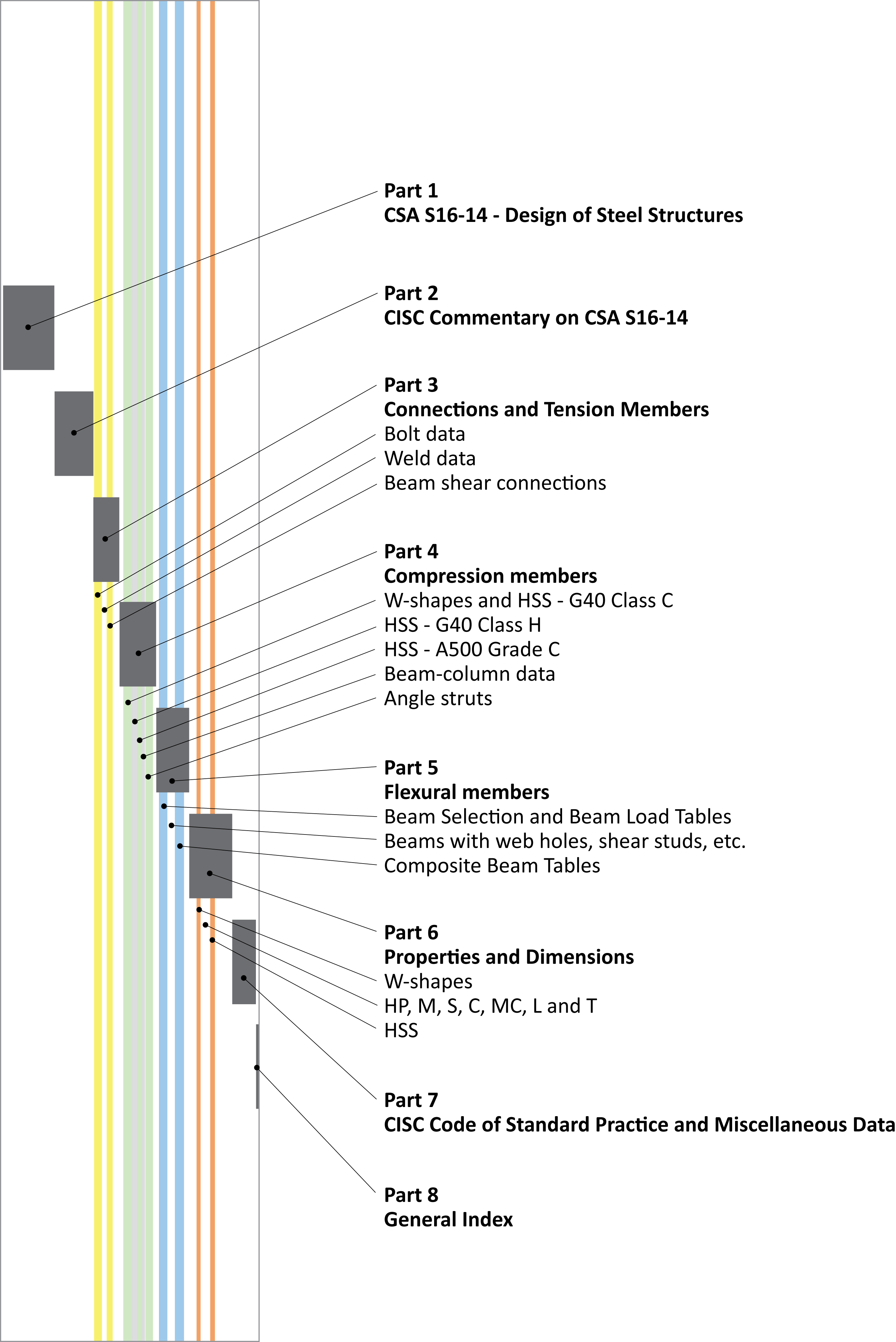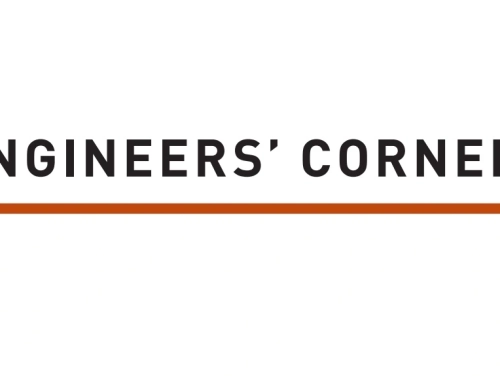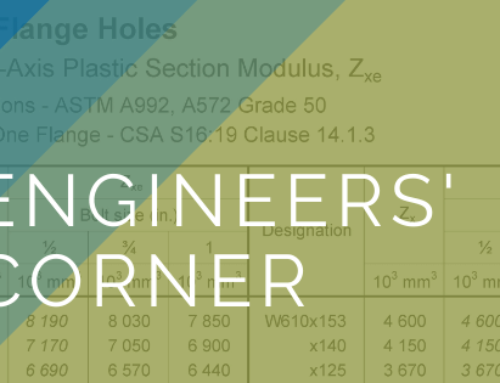Since the first edition of the CISC Handbook of Steel Construction published in 1967, commonly used design tables and data have been printed on coloured pages for easy reference. Handbook users are familiar with the yellow colour used for beam shear connections, green for column tables, and blue for beam tables. This colour scheme has remained essentially unchanged up to the 10th edition.
To provide ready access to a wider selection of design data, a new and expanded colour scheme was introduced in the 11th edition. Narrow vertical colour bars printed in the outer margins have replaced the uniform backgrounds of previous editions. Confining the reference colours to the margins allowed specific information to be displayed within the tables using additional colours, such as yellow cells to denote readily available W-shapes, without visual confusion.
The accompanying figure shows the colours along the edge of the new Handbook. As in previous editions, black thumb marks divide the different parts of the book (1 through 8).
In Part 3 – Connections and Tension Members – the first yellow bar directs users to bolt data, the white band between the yellow bars points to weld data, and the second yellow bar to beam shear connections.
Design data in Part 4 – Compression Members – is arranged in the following sequence: W-shapes and HSS produced to G40.21-350W Class C (first green bar), HSS produced to G40.21-350W Class H (grey), HSS produced to ASTM A500 Grade C (green), beam-column data (grey), and angle struts (green) including both single-angle and double-angle struts.
The first blue bar in Part 5 – Flexural Members – indicates the Beam Selection and Beam Load Tables, white includes beams with web holes, shear studs and other data, and the second blue bar indicates the Composite Beams.
A new orange colour was added in Part 6 – Properties and Dimensions. W-shapes are located within the first orange bar, HP, M, S, C, MC, L and T-section tables in the white, and HSS (both G40 and A500) in the second orange bar.






